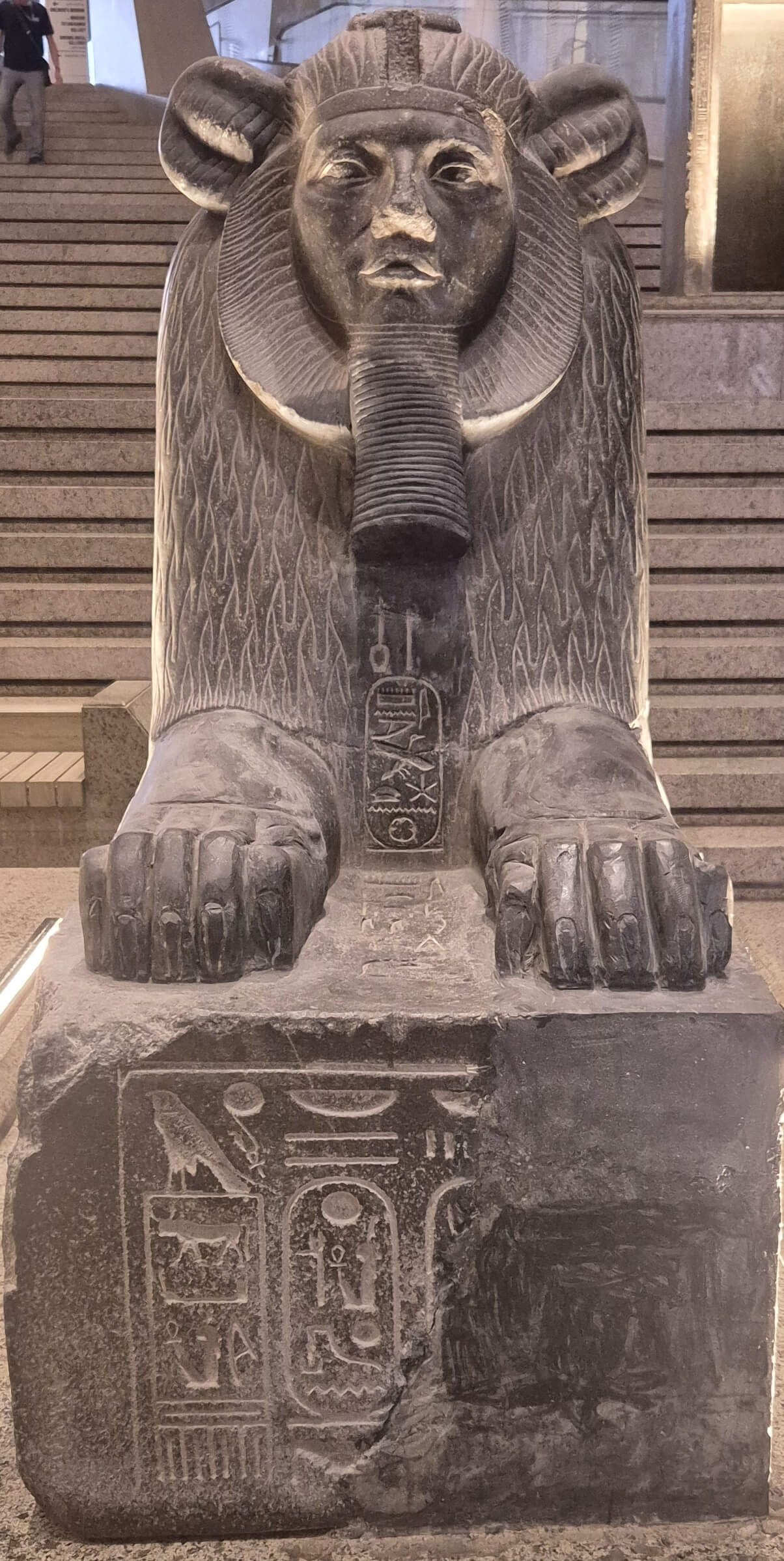
GEM 1380
Sphinx of King Amenemhat III
This striking statue represents a sphinx—a mythical creature with the body of a lion and the head of a human—depicting King Amenemhat III, one of the most remarkable rulers of Egypt’s Middle Kingdom, who reigned during the 12th Dynasty (c. 1831–1786 BCE). The sphinx symbolized strength, wisdom, and the fusion of human intelligence with the raw power of a lion—qualities the pharaoh sought to embody.
This piece is one of seven nearly identical sphinxes that once flanked the Great Temple of Amun at Tanis (San el-Hagar) in the eastern Delta. All seven share the same serene yet powerful facial features, showcasing Amenemhat III’s distinctive full face and broad, smiling lips ... Discover more with Premium!
Unlock the Full Story of This ArtifactUpgrade to premium to access the complete description, audio guides, and exclusive content for all artifacts.Access the full audio and description for the GEM's main artifacts for only $1.99
Looking For Another Artifact ?